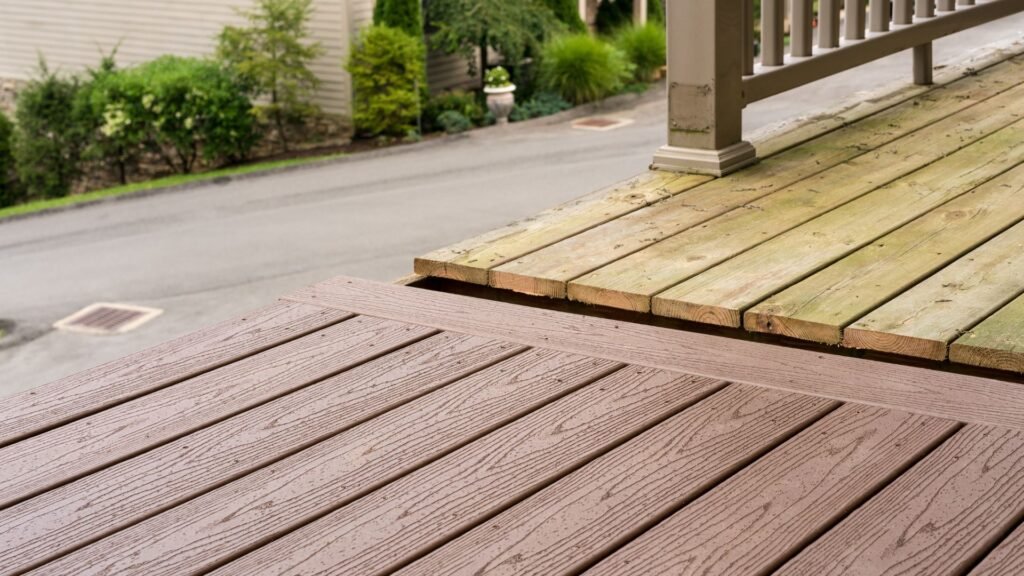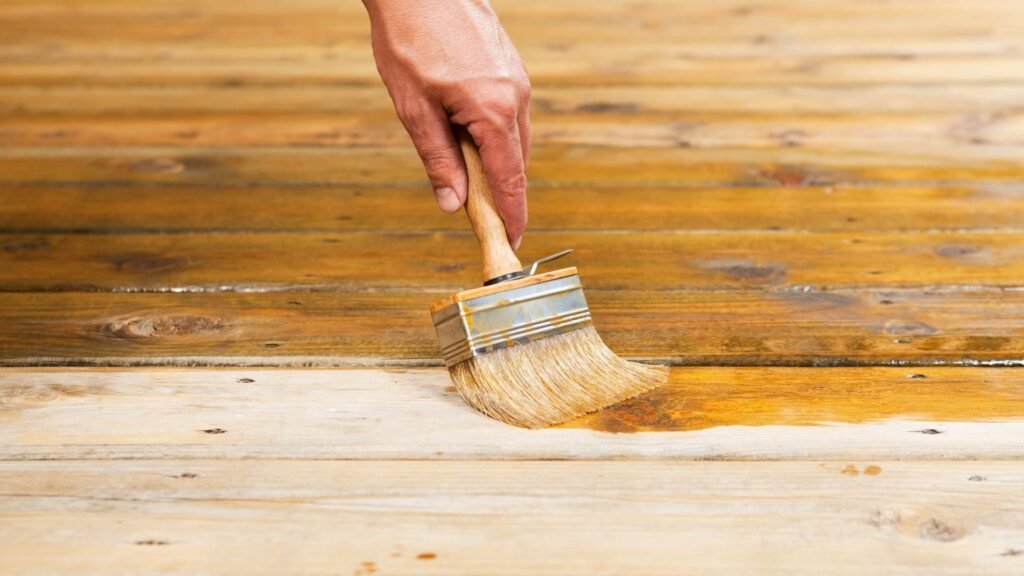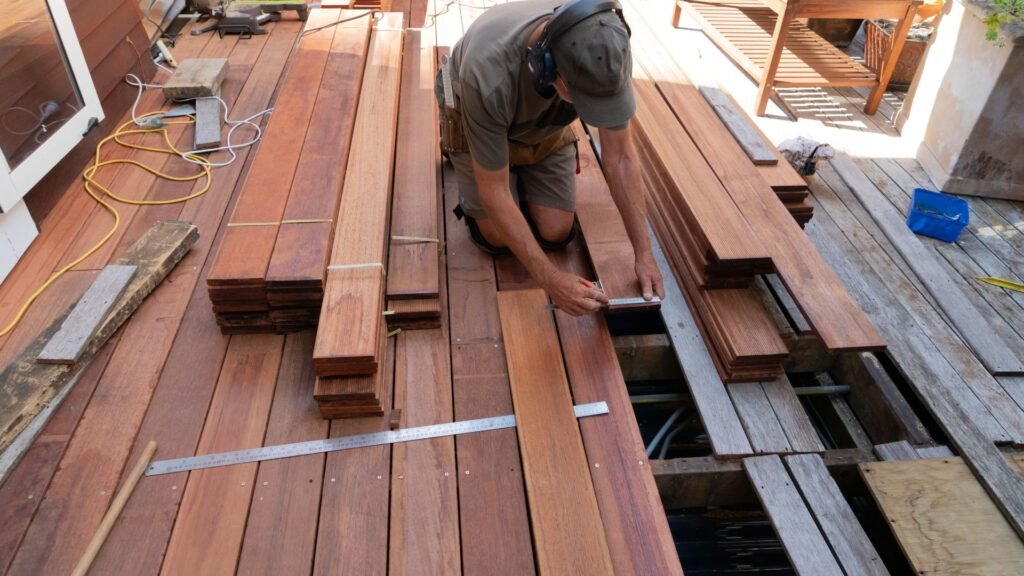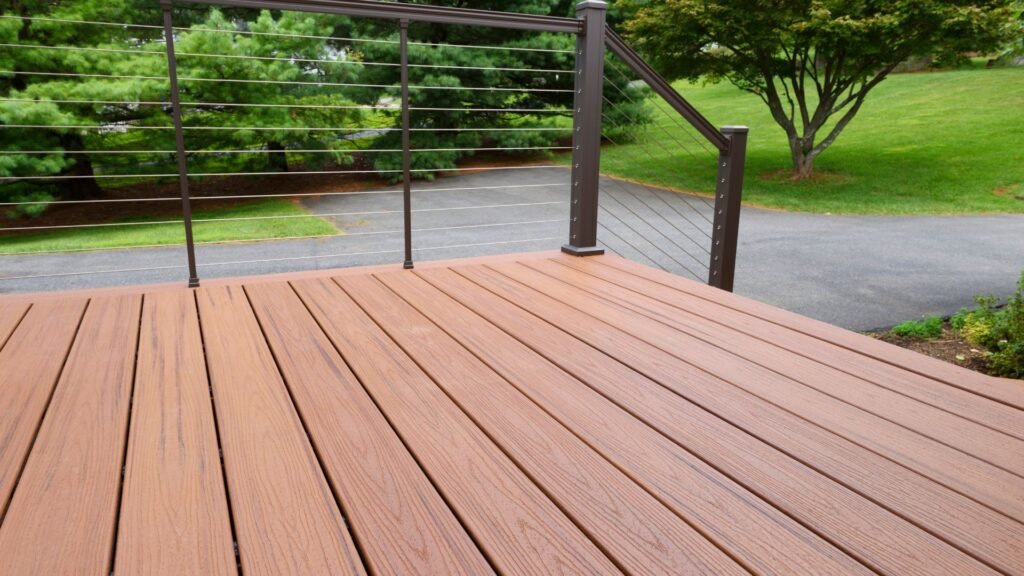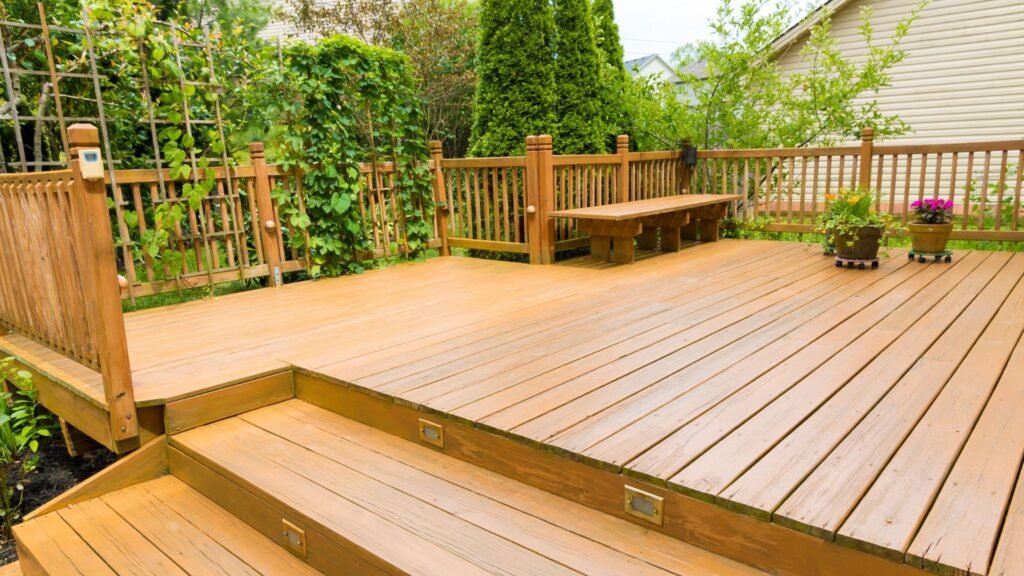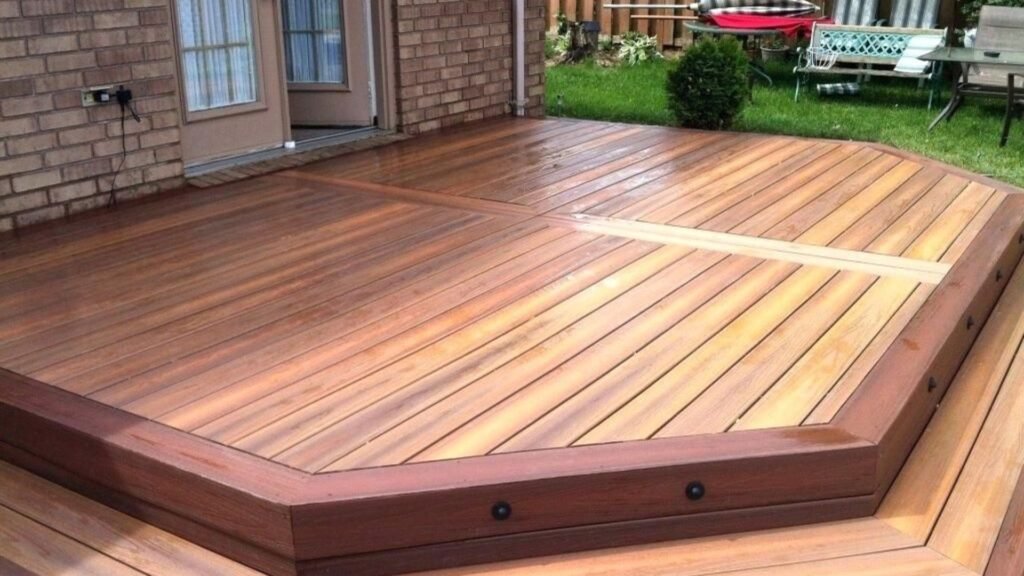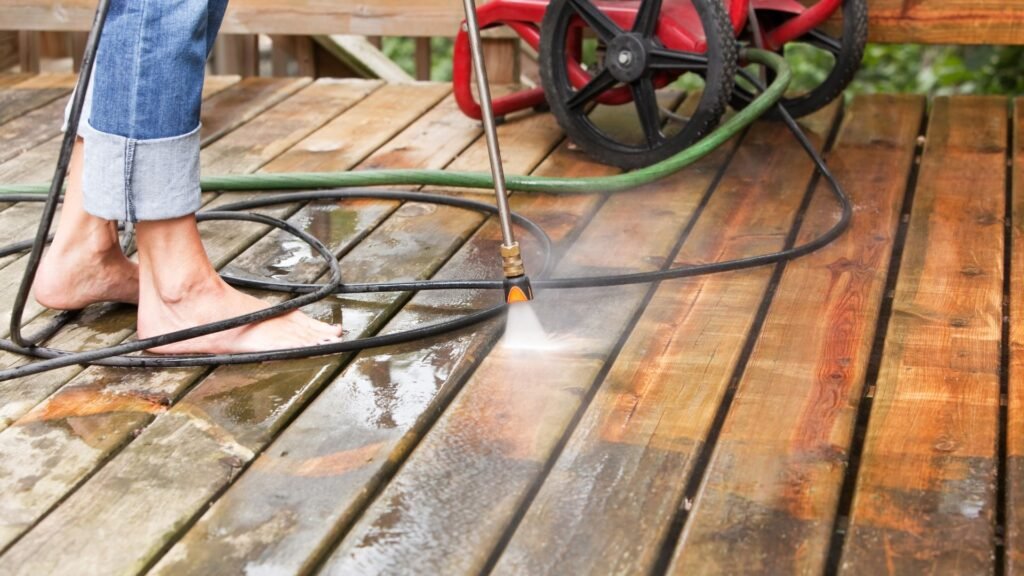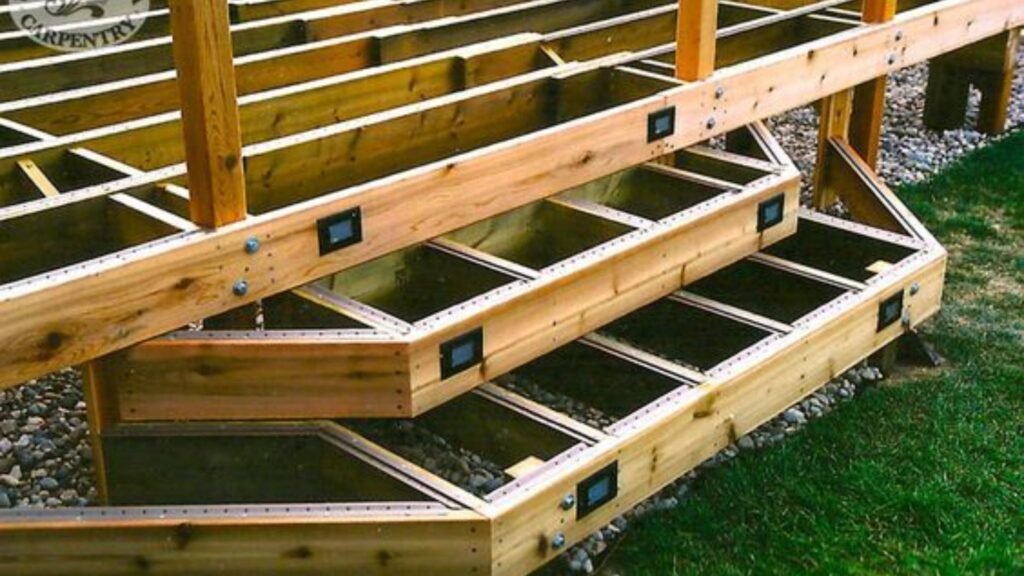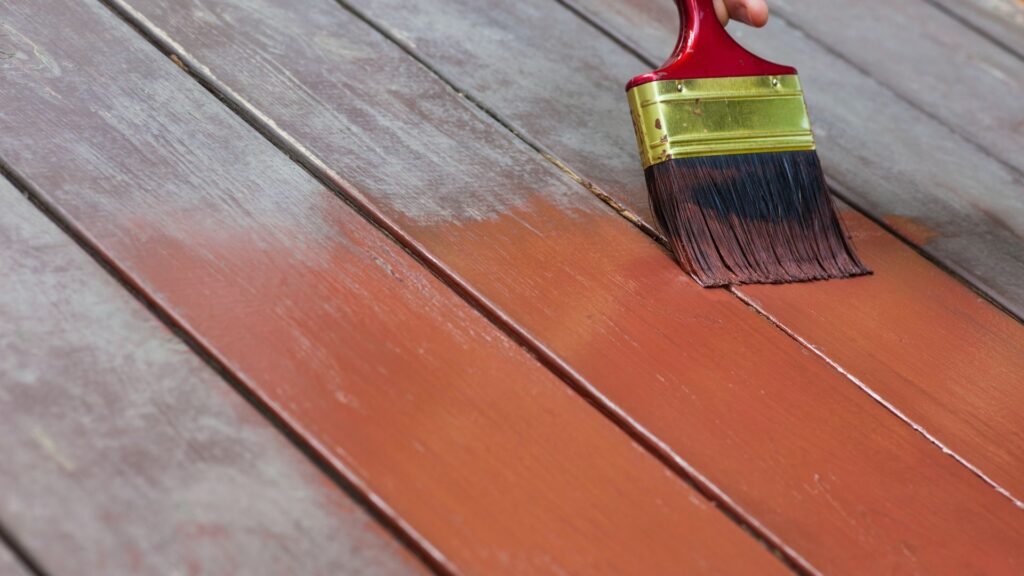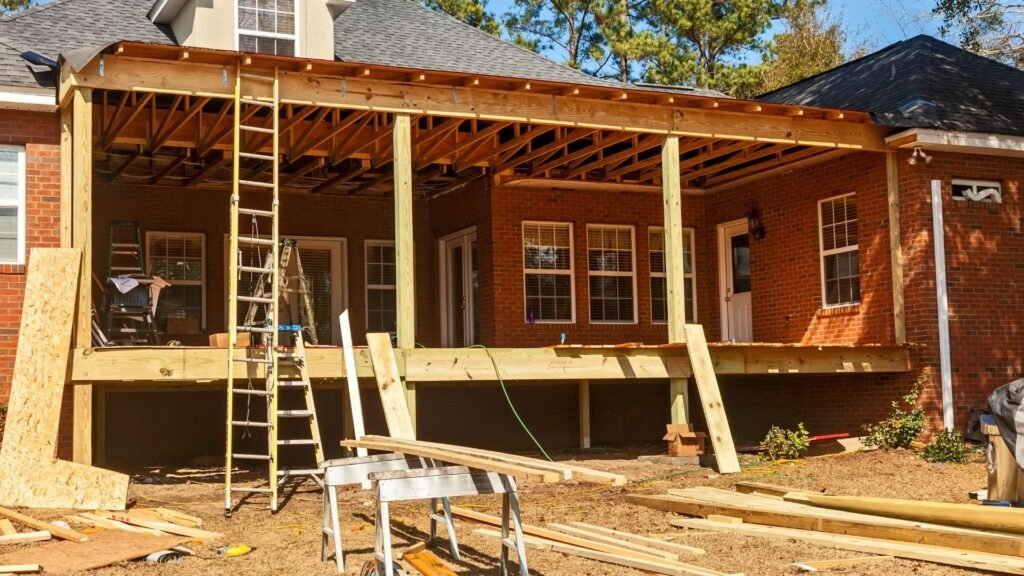Welcome to your ultimate guide to choosing between timber and composite decking for your outdoor space in New Zealand! Whether you’re building a brand-new deck or renovating an existing one, selecting the right material is crucial for both aesthetics and long-term durability. With NZ’s unique climate, from hot summers to damp winters, the decision between traditional timber and modern composite decking can feel overwhelming. In this guide, we’ll break down the key differences, advantages, and challenges of each option to help you make an informed choice that suits your home, lifestyle, and budget. Let’s dive into the world of timber versus composite decking and find out which one is right for you!
Timber decking offers a natural, classic look with the ability to stain or paint, but it requires regular maintenance to withstand New Zealand’s harsh weather conditions. Composite decking, made from a blend of wood fibers and recycled plastics, is highly durable, low-maintenance, and resistant to rot and UV damage. While timber provides a traditional, rustic appeal, composite is ideal for those seeking long-lasting performance with minimal upkeep. The choice depends on your aesthetic preferences, maintenance capacity, and budget.
Table of Contents
Timber Decking: The Classic Natural Choice
Timber decking has long been a popular choice for outdoor spaces in New Zealand. It combines natural beauty with versatility, making it a favored option for both residential and commercial projects. Below is a detailed breakdown of what timber decking is, its benefits, challenges, and ideal use cases in New Zealand.
What is Timber Decking?
Timber decking refers to the use of wood as the primary material to create outdoor deck structures. In New Zealand, timber decking is widely appreciated for its natural and authentic aesthetic appeal. As a nation known for its stunning landscapes, Kiwis often prefer materials that blend seamlessly with the outdoors, making timber a top choice.
Common types of timber used for decking in New Zealand include:
- Pine: A popular, affordable softwood option that is usually treated to resist decay and pests.
- Hardwoods like Kwila: Known for its durability, Kwila is a rich-colored wood that is resistant to rot and moisture, making it ideal for outdoor use.
- Vitex: A lighter-colored hardwood that is sustainably sourced and offers a smooth, sophisticated appearance.
Each type of timber comes with its own set of qualities, allowing homeowners to choose based on aesthetics, durability, and budget.
Benefits of Timber Decking
Timber decking offers a variety of advantages that appeal to homeowners looking for a natural and customizable outdoor living space:
1. Natural, Authentic Wood Aesthetic: Timber decking provides an organic look and feel that is hard to replicate with synthetic materials. The grain patterns, texture, and color variations add a timeless, rustic charm that enhances the overall appearance of outdoor spaces. Each piece of timber is unique, which gives the deck a personalized and distinctive look.
2. Customization with Stain or Paint: One of the major benefits of timber is its flexibility in terms of finishing. Homeowners can choose to stain the timber to bring out its natural hues or paint it to match the style of their home. This customization allows for endless design possibilities, making timber decking suitable for a wide range of architectural styles.
3. Eco-Friendly: When sourced from sustainable plantations, timber decking can be an environmentally friendly choice. Many decking timbers in New Zealand come from renewable sources, and wood is a natural, biodegradable material. Choosing certified sustainable timber helps reduce the environmental impact of your decking project.
Challenges of Timber Decking
While timber decking has many appealing features, it also presents a few challenges, particularly in New Zealand’s diverse climate conditions:
1. Prone to Weathering: Timber is susceptible to the elements, especially in New Zealand where climates can range from very humid in the north to cooler and drier in the south. Timber can be vulnerable to rot, mold, and warping if not properly maintained. The country’s frequent rainfall and coastal areas can accelerate the wear and tear on timber decks.
2. Regular Maintenance Required: One of the key downsides of timber decking is the upkeep it demands. To maintain its appearance and integrity, timber decks need regular sealing, staining, or painting to protect against moisture, sun damage, and wear. Cleaning the deck is also essential to prevent mold buildup and extend its lifespan.
3. Fading and Discoloration: Over time, exposure to UV rays can cause timber to fade or change color, often turning a silvery-grey if left untreated. This is a natural process, but homeowners who prefer the original look of the wood will need to re-stain or treat the deck to maintain its appearance.
Ideal Use Cases for Timber Decking in NZ
Timber decking is an ideal choice for homeowners who want to create a warm, inviting outdoor space that complements the natural environment. Some of the most suitable use cases for timber decking in New Zealand include:
1. Traditional Homes or Homes with a Natural, Rustic Aesthetic: Timber decking enhances homes that lean towards a more traditional or rustic design. The natural wood aesthetic fits seamlessly with classic architecture, cottages, and rural properties where blending with the surrounding landscape is important.
2. DIY Enthusiasts and Homeowners Who Enjoy Maintenance: For those who take pride in home improvement and enjoy hands-on maintenance projects, timber decking offers an opportunity for regular upkeep and personalization. Many homeowners in New Zealand relish the chance to stain, clean, or refinish their timber deck as part of the overall home care experience.
In conclusion, timber decking remains a classic choice for outdoor spaces in New Zealand. While it requires consistent care and maintenance, the timeless appeal, natural aesthetic, and versatility of timber make it an enduringly popular option. For those seeking a warm, eco-friendly, and customizable decking solution, timber offers an unbeatable connection to nature and outdoor living.
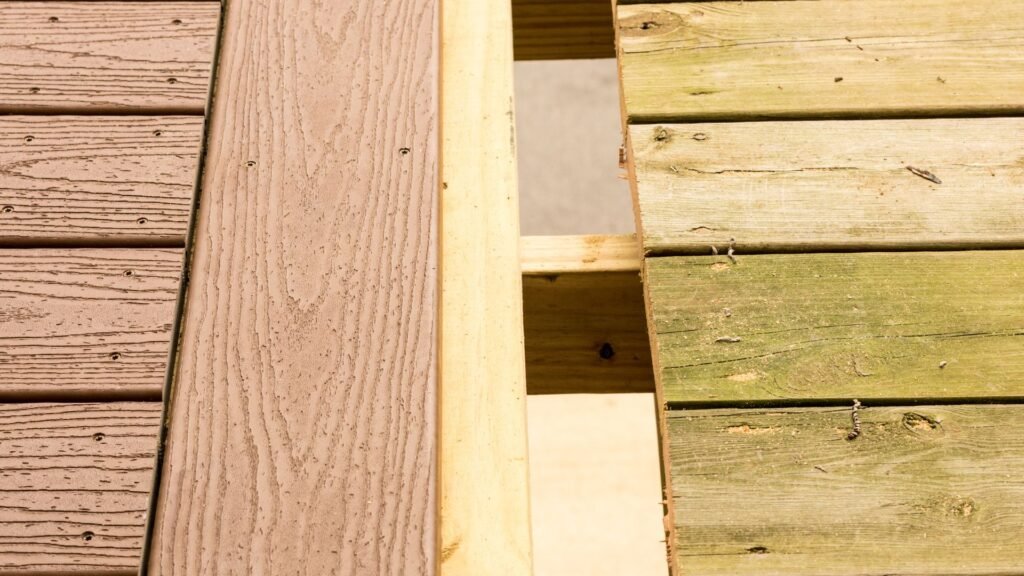
Composite Decking: The Modern, Low-Maintenance Solution
In the realm of outdoor living spaces, composite decking has emerged as a modern and low-maintenance alternative to traditional wood decks. Especially in New Zealand, where environmental factors and aesthetics are crucial, composite decking is quickly becoming the go-to choice for homeowners who seek durability, sustainability, and ease of care. In this article, we’ll explore what composite decking is, its benefits, challenges, and ideal use cases in New Zealand.
What is Composite Decking?
Composite decking is a manufactured material that combines wood fibers and recycled plastic to create a durable and resilient outdoor flooring solution. Unlike traditional timber, which requires regular maintenance, composite decking is designed to withstand the elements with minimal upkeep. This makes it a popular choice for homeowners who want the beauty of wood without the hassle.
Common composite decking brands in New Zealand include Trex, Futurewood, and ModWood, all of which offer a range of products that cater to different aesthetic preferences and performance needs. These brands are known for their quality, offering composite decks that are designed to mimic the look and feel of natural wood while providing the benefits of modern materials.
Benefits of Composite Decking
Composite decking is praised for its many advantages over traditional wood, making it a top choice for modern homes in New Zealand. Below are some of the key benefits:
- Low Maintenance: One of the most appealing aspects of composite decking is its minimal maintenance requirements. There is no need for regular painting, staining, or sealing, unlike timber decks that require constant attention to maintain their appearance and durability. Simply clean it periodically with soap and water to keep it looking fresh.
- Weather Resistant: New Zealand’s varied climate can be harsh on outdoor materials. Composite decking is highly resistant to weathering, including rain, wind, and UV rays, making it less likely to crack, warp, or fade over time. This durability ensures that your deck remains in excellent condition for many years, even in areas exposed to the elements.
- Mold and Mildew Resistant: Since composite decking is made from a blend of wood fibers and plastic, it is less susceptible to mold, mildew, and rot, which can plague traditional wooden decks. This resistance adds to the longevity of the material, ensuring a longer-lasting, healthier deck.
- Variety of Colors and Textures: Composite decking is available in a wide range of colors and textures that closely mimic the appearance of natural wood. This allows homeowners to choose a style that complements their outdoor living space while enjoying the benefits of a more durable material.
- Eco-Friendly: Many composite decking brands use recycled materials, including plastics and wood byproducts, making this an environmentally conscious choice for homeowners looking to reduce their carbon footprint. By using composite decking, you’re contributing to the reduction of waste and the demand for virgin materials.
Challenges of Composite Decking
While composite decking offers numerous benefits, it’s important to consider some of the challenges that come with this modern material:
- Higher Initial Cost: Composite decking tends to have a higher upfront cost compared to traditional timber. This can be a deterrent for homeowners on a tight budget, although it’s worth noting that the long-term savings in maintenance costs often make up for the higher initial investment.
- Heat Retention: In direct sunlight, composite decking can become hot to the touch, making it uncomfortable to walk on during the hottest parts of the day. Homeowners should take this into account when planning their deck placement, especially in regions of New Zealand that experience high temperatures in the summer months.
- Appearance Preferences: While composite decking does a great job of mimicking the appearance of wood, some homeowners still prefer the authentic look and feel of natural timber. This is a matter of personal preference, and it’s worth considering if the natural aesthetic is a priority for your outdoor space.
Ideal Use Cases for Composite Decking in New Zealand
Composite decking is an excellent choice for a variety of outdoor applications, particularly in modern settings where durability and low maintenance are key priorities. Here are some ideal scenarios for using composite decking in New Zealand:
- Modern Homes with Sleek Designs: Composite decking complements contemporary architectural styles, offering a clean, polished look that fits seamlessly with modern homes. Its range of colors and textures can enhance the aesthetic of sleek, minimalist spaces.
- Low-Maintenance Lifestyles: For homeowners who prefer to spend their time enjoying their outdoor space rather than maintaining it, composite decking is a perfect solution. Its low-maintenance nature allows for more leisure time and less time spent on upkeep.
- Durability in Harsh Climates: In regions of New Zealand where weather conditions can be unpredictable or harsh, composite decking is a great option due to its weather resistance and durability. Homes near coastal areas, where saltwater and humidity can damage traditional timber, especially benefit from this material.
In conclusion, composite decking provides a modern, eco-friendly, and low-maintenance solution for New Zealand homeowners looking to create beautiful, long-lasting outdoor spaces. While the initial cost may be higher and some may prefer the feel of natural wood, the long-term benefits and durability make composite decking a worthy investment for many. Whether you’re building a deck for a sleek, modern home or seeking a durable option for your coastal retreat, composite decking is a practical choice that combines style and functionality.

Comparing Timber Vs Composite Decking: Key Factors To Consider
When choosing between timber and composite decking, understanding the key factors that impact durability, cost, and maintenance can guide you toward the best choice for your needs, particularly in New Zealand’s unique climate. Here’s an in-depth look at the critical considerations to keep in mind when comparing these two popular decking materials.
Durability and Lifespan
The lifespan of your decking is crucial for long-term investment. Timber decking, especially hardwood varieties like Kwila or Jarrah, can last up to 20 years with proper care. However, New Zealand’s diverse climate, ranging from the humid subtropical North Island to the cooler, windier South Island, can take its toll on timber. Over time, timber is prone to wear, including cracking, splitting, and warping due to moisture or UV exposure.
On the other hand, composite decking is engineered to withstand these challenges. Made from a mix of recycled plastics and wood fibers, composite decking is highly resistant to weathering, moisture, and UV rays. It can easily last 25–30 years, or even longer, with minimal maintenance. For homeowners looking for long-term durability without the hassle of frequent upkeep, composite is often the preferred choice.
Maintenance Requirements
One of the biggest differentiators between timber and composite decking is the level of maintenance required. Timber decking demands regular upkeep to maintain its appearance and structural integrity. This involves periodic staining, sealing, and cleaning to protect it from moisture and UV damage. In New Zealand’s coastal regions, timber decks may need even more attention due to salt air and humidity.
In contrast, composite decking is virtually maintenance-free. An occasional wash with soap and water is usually enough to keep it looking fresh. It doesn’t require staining or sealing, which saves homeowners both time and money in the long run. If you prefer a hassle-free option, composite decking stands out as the superior choice.
Cost Comparison
When comparing the initial costs, timber is generally more affordable than composite decking. However, it’s essential to factor in long-term expenses. Timber may be cheaper upfront, but the costs of maintenance—such as buying stain, sealant, and cleaning materials—can add up over time. Additionally, timber decks may need repairs or replacements sooner due to wear and tear.
Composite decking, while more expensive initially, pays off over time with minimal maintenance costs. It doesn’t require frequent treatment, and its longer lifespan means you won’t need to replace it as often. For homeowners considering the overall cost, composite decking is a smart, long-term investment that balances out the higher upfront price.
Environmental Impact
Both timber and composite decking have environmental considerations, and sustainability is increasingly important to homeowners. Timber decking can be eco-friendly if sourced from responsibly managed forests. Look for FSC (Forest Stewardship Council) certified wood to ensure it comes from sustainable sources.
Composite decking is made from recycled materials, often including reclaimed wood fibers and plastics. This helps reduce landfill waste and offers a second life to materials that would otherwise be discarded. However, the production of composite decking involves more complex manufacturing processes, which may require more energy compared to timber. If sustainability is your priority, researching the sourcing of both materials is crucial.
Aesthetic Appeal
The aesthetic appeal of decking materials is often one of the most important factors for homeowners. Timber’s natural beauty and warm, traditional appearance are hard to beat. Each plank of wood is unique, offering natural grain patterns and color variations that create a rustic and organic feel.
Composite decking, while designed to mimic the look of wood, offers a more uniform and consistent finish. Many composite decks can replicate the appearance of timber, complete with wood grain textures. However, some homeowners may feel that it lacks the authentic charm and unique imperfections that come with natural timber. It ultimately depends on your design preferences—whether you value the classic, natural look of timber or the sleek, modern appearance of composite.
Performance in NZ’s Climate
New Zealand’s varying climate can greatly affect the performance of your deck. Timber, especially softwoods, can be susceptible to moisture damage in regions with heavy rainfall or high humidity, such as the North Island. Over time, timber may warp, crack, or develop mold if not properly maintained. Exposure to extreme sunlight can also cause fading and splintering.
Composite decking, on the other hand, is highly resistant to the elements. It performs exceptionally well in both hot and cold climates, making it a great option for areas prone to fluctuating temperatures. Additionally, composite decking doesn’t absorb water, which makes it a strong candidate for coastal regions where salt air is a concern. For those in areas like Auckland or Wellington, where weather can be unpredictable, composite decking offers a reliable and durable solution.
Installation Ease
Both timber and composite decking can be installed as a DIY project, though each comes with its own considerations. Timber decking installation is relatively straightforward, but it requires a good understanding of woodworking and construction techniques. You’ll need to ensure that the wood is properly treated and fastened to avoid future issues with warping or splitting.
Composite decking, while often marketed as DIY-friendly, may come with specific systems that require professional installation. Some brands use hidden fasteners or clips, which can add complexity to the process. However, once installed, composite decking requires far less upkeep than timber. If ease of installation is a concern, consider whether you have the skills for a DIY timber deck or if you’ll benefit from the professional help often required with composite systems.
Choosing between timber and composite decking depends on several factors, including your budget, maintenance preferences, and climate. Timber offers natural beauty and a lower upfront cost but requires more maintenance and has a shorter lifespan. Composite, while pricier initially, provides excellent durability, low maintenance, and long-term value, making it a great option for homeowners seeking a low-hassle decking solution that stands up to New Zealand’s diverse climates. Weighing these factors will help you make an informed decision that suits your lifestyle and location.

Timber Vs Composite Decking: Real Experiences From New Zealand Homeowners
When it comes to choosing between timber and composite decking, many homeowners in New Zealand find themselves weighing up the pros and cons. Both materials offer unique benefits, but real-life experiences from Kiwi homeowners can offer valuable insights into how each type of decking holds up over time. In this section, we’ll explore personal stories, including what homeowners loved, the challenges they faced, and how the decking materials performed in different regions of the country, from coastal areas to urban and rural settings.
Real-Life Experiences: Timber Decking
Case Study 1: John and Sarah from Tauranga (Coastal Region)
Living by the sea, John and Sarah initially chose timber decking for their beachside home. The natural look and feel of timber aligned with the aesthetic of their coastal property, and the warmth it brought to their outdoor space was unbeatable. However, after a few years, they noticed that the salty air and high humidity had begun to take a toll. Despite regular maintenance, including staining and sealing, the timber started showing signs of wear and tear, including fading and warping.
“We love the natural beauty of timber,” says Sarah, “but living so close to the ocean means it requires a lot of upkeep. We’ve had to sand and re-stain the deck every two years to keep it looking fresh.”
Their experience highlights the charm of timber decking but also the challenges in maintaining it, especially in coastal regions where weather conditions can be harsh.
Case Study 2: Mark from Wellington (Urban Area)
Mark, who lives in the heart of Wellington, opted for timber decking for his urban home. He appreciated its organic feel and the way it seamlessly blended with his garden. In an urban setting, timber fared better in terms of weather exposure compared to coastal regions. However, he did notice some minor issues.
“Timber looks great, but it’s a living material, so you have to stay on top of maintenance,” Mark explains. “In my case, it’s not the rain but the moss that can grow during the winter months, making the deck slippery.”
Mark’s experience shows that even in urban areas, timber requires regular care to ensure safety and longevity. Nevertheless, for those who value the aesthetic of natural wood, timber decking remains a strong contender.
Real-Life Experiences: Composite Decking
Case Study 3: Rachel and Mike from Christchurch (Rural Setting)
Rachel and Mike live in a rural area outside Christchurch and decided to install composite decking due to its low-maintenance appeal. With their busy lifestyle, they didn’t want to worry about constant upkeep. Five years later, they’re still happy with their decision.
“The composite decking has been great for us,” says Mike. “It looks as good as the day we installed it. We’ve had no issues with warping or fading, and it’s been easy to clean. It doesn’t need painting or staining, which saves us time and effort.”
For homeowners in rural areas like Rachel and Mike, composite decking offers durability and a hassle-free experience. However, they did mention one drawback: the initial cost. Composite decking can be more expensive upfront, but for them, the long-term benefits outweighed the cost.
Case Study 4: Anita from Auckland (Coastal Region)
Anita chose composite decking for her home in Auckland’s coastal suburbs. Having previously dealt with the upkeep of timber decking at a different property, she decided to try composite for her new home. So far, she’s been impressed.
“With composite, there’s no need to worry about moisture damage or splinters,” says Anita. “It’s been perfect for the kids and easy to maintain. Even with the constant exposure to sea air, the decking hasn’t faded or deteriorated.”
Anita’s experience echoes the sentiment of many homeowners in coastal regions who prefer composite decking for its resistance to moisture and weather elements. While composite may lack the natural feel of timber, the durability and low maintenance make it a popular choice, especially in harsh climates.
Key Takeaways from Homeowner Experiences
From these real-life experiences, it’s clear that both timber and composite decking have their strengths and challenges. For homeowners who prioritize the natural beauty of wood and are willing to invest time in regular maintenance, timber decking can be a rewarding choice. However, those looking for a low-maintenance, durable solution, particularly in harsh weather conditions or rural settings, might find composite decking to be a better fit.
In coastal regions like Tauranga and Auckland, where moisture and salt air can quickly wear down natural wood, composite decking tends to hold up better over time. On the other hand, in urban areas like Wellington, timber remains a viable option as long as homeowners are prepared for the upkeep.
Whether you choose timber or composite decking for your New Zealand home, it’s essential to consider the local climate, your lifestyle, and how much time you’re willing to spend on maintenance. Real experiences from homeowners across the country show that the best decking material often depends on your individual needs and the specific demands of your environment.

FAQs: About Timber Vs Composite Decking NZ
Which decking material lasts longer in New Zealand’s climate?
Composite decking typically lasts longer than timber in New Zealand’s varied climates. While high-quality timber can last up to 20 years with regular maintenance, composite decking can last 25–30 years or more with minimal upkeep, making it more durable in harsh weather conditions.
What is the cost difference between timber and composite decking in NZ?
Timber decking has a lower upfront cost than composite decking, with options like pine being more affordable. However, composite decking often pays off in the long run due to lower maintenance costs. Over time, the costs may balance out, especially when factoring in the upkeep required for timber.
Does composite decking fade over time in the NZ sun?
High-quality composite decking is designed to resist UV damage, meaning it won’t fade as dramatically as timber when exposed to sunlight. Some fading may occur over time, but it is generally minimal compared to timber, which can discolor and fade without regular treatment.
Which decking material is more eco-friendly: timber or composite?
Both timber and composite decking can be eco-friendly, depending on their sourcing. Sustainably harvested timber (FSC-certified) is a renewable resource. Composite decking, made from recycled materials, helps reduce landfill waste. However, its manufacturing process is more complex. Both options have eco-friendly benefits, but sourcing is key.
How often does timber decking need maintenance in NZ?
Timber decking in New Zealand requires regular maintenance, including cleaning, staining, or sealing at least once a year. This is essential to protect it from moisture, mold, and UV damage. Neglecting this maintenance can lead to warping, cracking, or rot, especially in humid or rainy climates.
Is composite decking slippery when wet?
Most composite decking is designed with slip-resistant surfaces, making it safer in wet conditions compared to untreated timber. However, during heavy rainfall or in areas with high moisture, both materials can become slippery, so regular cleaning to remove debris and mold is recommended.
Can I paint or stain my composite decking?
Composite decking is not designed to be painted or stained, as it comes pre-finished in a variety of colors and textures. Painting or staining can void the warranty of some brands. If you prefer a decking material that can be customized with paint or stain, timber might be a better option.
Which decking material is better suited for coastal areas in NZ?
Composite decking is generally better suited for coastal areas due to its resistance to salt air, moisture, and UV exposure. Timber decking, especially hardwoods like Kwila, can also perform well but requires more maintenance to protect it from the harsh coastal environment.
How does the installation process differ between timber and composite decking?
Both timber and composite decking can be installed as DIY projects, but composite decking often comes with hidden fastening systems that require precision. Timber is easier to cut and customize on-site but may require additional treatments. For both materials, a professional installation can ensure a longer-lasting, high-quality finish.
Is composite decking worth the higher initial cost?
Composite decking is worth the higher initial cost for homeowners seeking low-maintenance, long-lasting decking. While timber may be cheaper upfront, the long-term maintenance and repairs can add up. Composite decking offers durability, ease of care, and weather resistance, making it a cost-effective choice over time, especially in NZ’s unpredictable climate.
Conclusion
When deciding between timber and composite decking, it’s essential to weigh several factors such as durability, maintenance requirements, aesthetics, and climate. Timber offers a natural look and feel, but it often requires regular upkeep to maintain its beauty and longevity. On the other hand, composite decking, made from a blend of wood fibers and plastic, is low-maintenance and long-lasting but may lack the authentic charm of wood. Ultimately, your choice should reflect your personal style, how much maintenance you’re willing to commit to, and the climate in which you live. To ensure the best fit for your project, consider visiting local suppliers or consulting with a decking expert to explore your options in detail and make an informed decision.
About the Author:
Mike Veail is a recognized digital marketing expert with over 6 years of experience in helping tradespeople and small businesses thrive online. A former quantity surveyor, Mike combines deep industry knowledge with hands-on expertise in SEO and Google Ads. His marketing strategies are tailored to the specific needs of the trades sector, helping businesses increase visibility and generate more leads through proven, ethical methods.
Mike has successfully partnered with numerous companies, establishing a track record of delivering measurable results. His work has been featured across various platforms that showcase his expertise in lead generation and online marketing for the trades sector.
Learn more about Mike's experience and services at https://theleadguy.online or follow him on social media:

